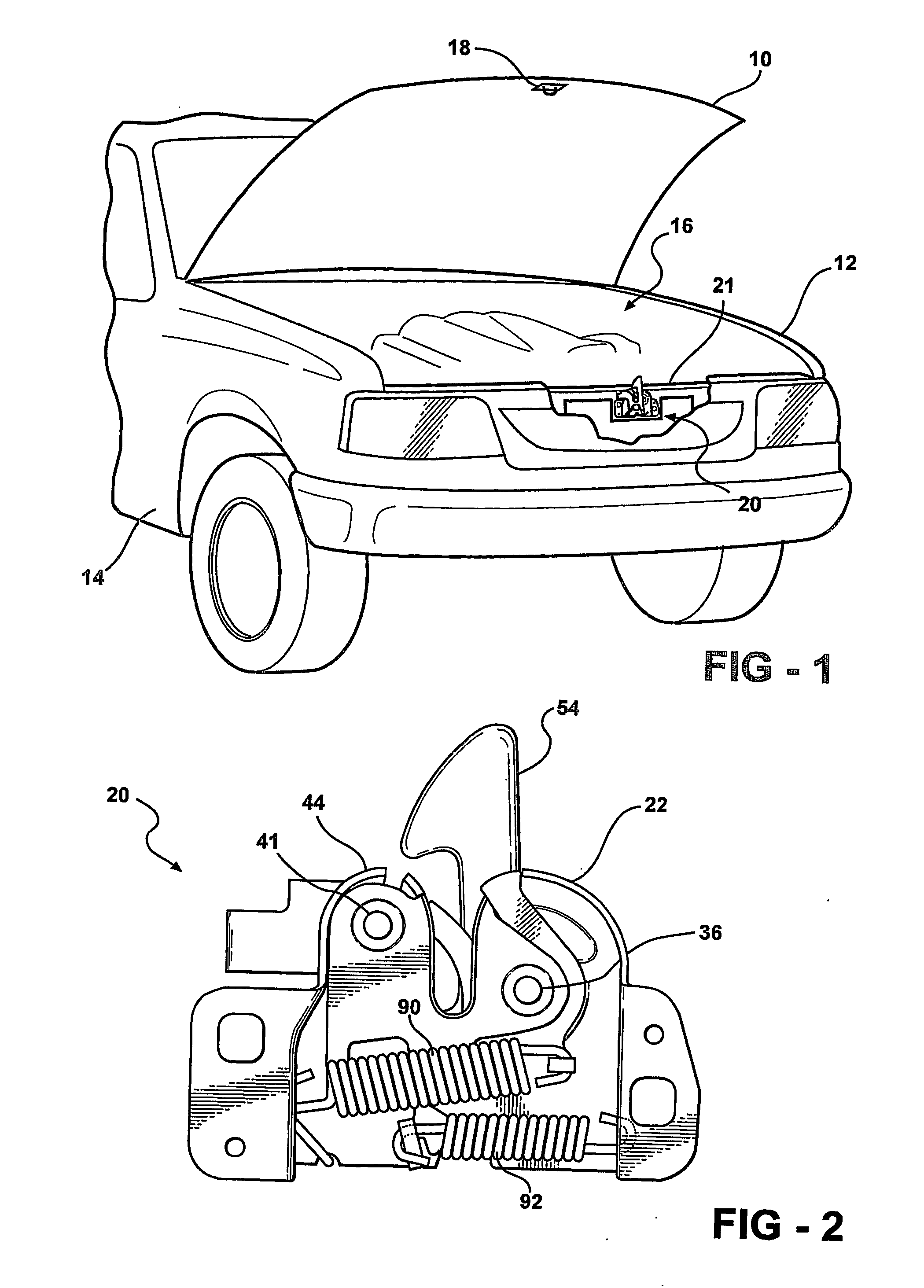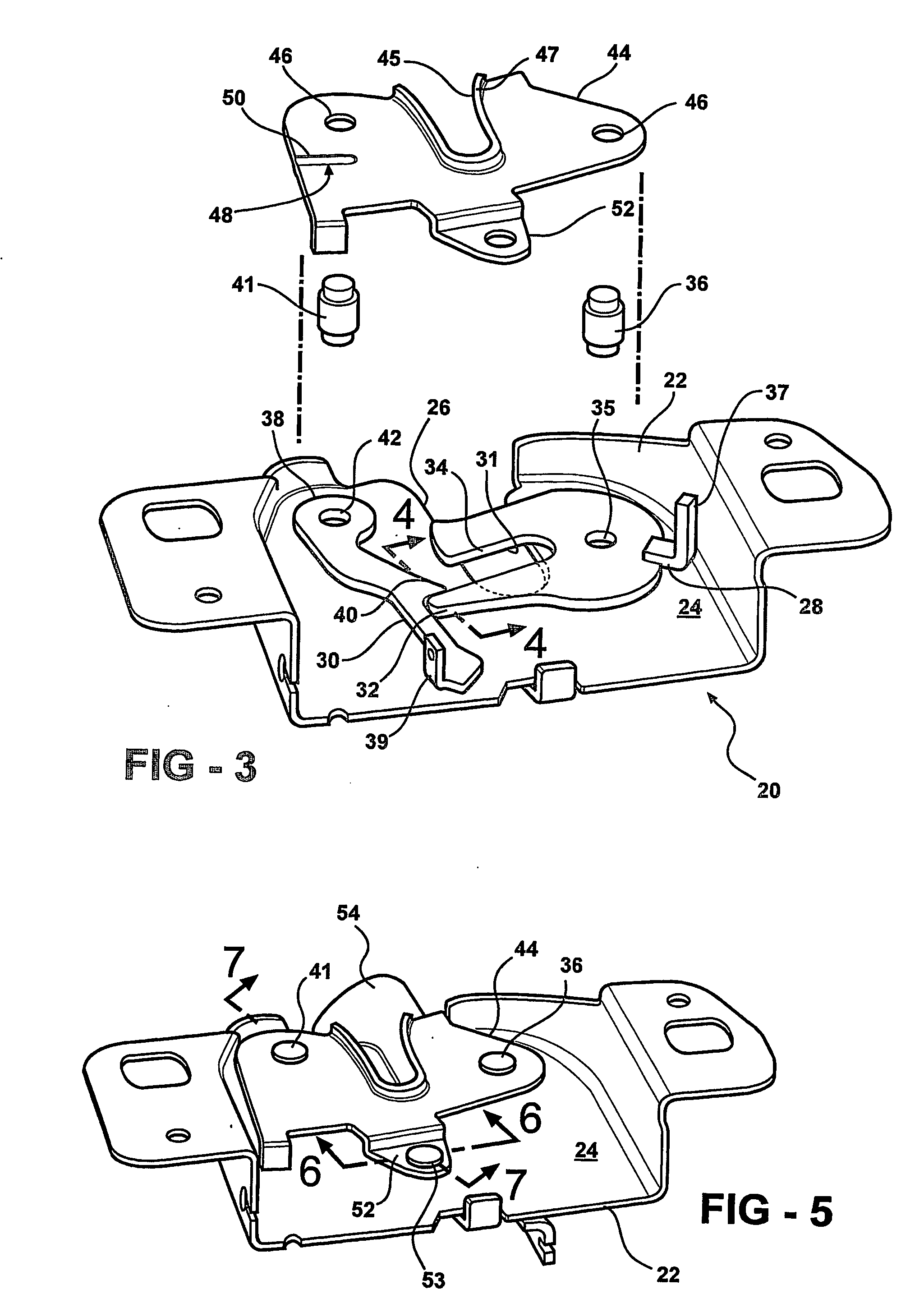Hood latch assembly
- Summary
- Abstract
- Description
- Claims
- Application Information
AI Technical Summary
Benefits of technology
Problems solved by technology
Method used
Image
Examples
Embodiment Construction
[0023] Referring to FIG. 1, a hood 10 is pivotally secured to a body 12 of a motor vehicle 14. The hood 10 is shown in an open position, in which an engine compartment 16 is exposed to allow access thereto for servicing. The hood 10 moves between a closed position covering the engine compartment and the open position. It is desirable to maintain the hood 10 in the closed position at all times except when access to the engine compartment 16 is desired.
[0024] A striker 18 is secured to the hood 10 and extends outwardly therefrom. The striker 18 is a generally U-shaped bar that is engaged by a hood latch, generally indicated at 20, to latch the hood 10 in the closed position. The hood latch 20 is secured to the body 12 at a front portion 21 thereof and is positioned so that the striker 18 will engage the hood latch 20 upon the hood 10 reaching the closed position. It is appreciated that, alternatively, the hood latch 20 may be secured to the hood 10 and the striker 18 may be secured t...
PUM
 Login to View More
Login to View More Abstract
Description
Claims
Application Information
 Login to View More
Login to View More - R&D
- Intellectual Property
- Life Sciences
- Materials
- Tech Scout
- Unparalleled Data Quality
- Higher Quality Content
- 60% Fewer Hallucinations
Browse by: Latest US Patents, China's latest patents, Technical Efficacy Thesaurus, Application Domain, Technology Topic, Popular Technical Reports.
© 2025 PatSnap. All rights reserved.Legal|Privacy policy|Modern Slavery Act Transparency Statement|Sitemap|About US| Contact US: help@patsnap.com



